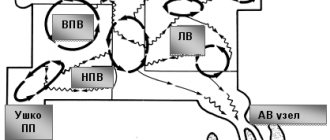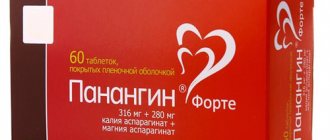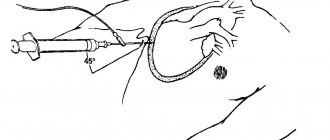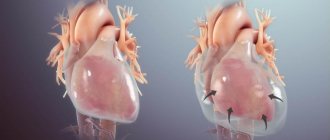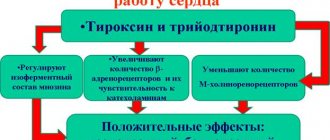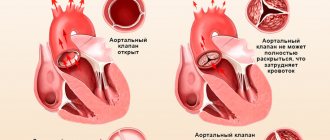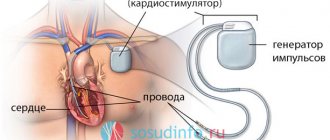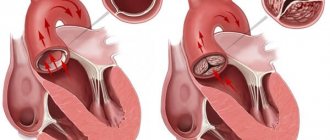Cardiovascular diseases, unfortunately, occupy one of the first places in mortality in our country. But cardiology does not stand still, but is constantly improving. New treatment methods are constantly emerging in this area and the latest technologies are being introduced. Naturally, people suffering from severe heart diseases are interested in all the innovations in cardiology, and therefore in various methods of surgical interventions.
When is cardiac surgery used?
Absolutely not any disturbance in cardiac activity entails surgical intervention. There are very clear criteria on which the attending physician relies when recommending this or that cardiac operation. Such indications may be:
- Significant and rapidly progressive deterioration of the patient's condition associated with chronic heart failure.
- Acute conditions that threaten the patient's life.
- Extremely low effectiveness of simple drug treatment with obvious dynamics of deterioration of the general condition.
- The presence of advanced cardiac pathologies that developed due to late consultation with a doctor and lack of adequate treatment.
- Heart defects are both congenital and acquired.
- Ischemic pathologies leading to the development of heart attack.
Types of heart surgery
Today, there are many different surgical procedures on the human heart. All these operations can be divided according to several basic principles.
- Urgency.
- Technique.
Operations varying in urgency
Any surgical intervention will fall into one of the following groups:
- Emergency operations. The surgeon performs such heart operations if there is a real threat to the patient’s life. This could be sudden thrombosis, myocardial infarction, incipient aortic dissection, or cardiac injury. In all these situations, the patient is sent to the operating table immediately after diagnosis, usually even without further tests and examinations.
- Urgent. In this situation there is no such urgency, clarifying examinations can be carried out, but the operation cannot be postponed either, as a critical situation may develop in the near future.
- Planned. After long-term observation by the attending cardiologist, the patient is referred to the hospital. Here he undergoes all the necessary examinations and preparation procedures before surgery. The heart surgeon clearly sets the time for the operation. If problems arise, such as a cold, it can be postponed to another day or even a month. There is no threat to life in such a situation.
Differences in technique
In this group, all operations can be divided into:
- With an opening of the chest. This is a classic method that is used in the most severe cases. The surgeon makes an incision from the neck to the navel and opens the entire chest. This gives the doctor direct access to the heart. This manipulation is performed under general anesthesia and the patient is transferred to the artificial circulation system. As a result of the fact that the surgeon works with a “dry” heart, he can eliminate even the most severe pathologies with minimal risk of complications. This method is used if there are problems with the coronary artery, heart valves, aorta and other great vessels, with severe atrial fibrillation and other problems.
- Without opening the chest. This type of surgery belongs to the so-called minimally invasive techniques. There is absolutely no need for open access to the heart. These techniques are much less traumatic for the patient, but they are not suitable in all cases.
- X-ray surgical technique. This method in medicine is relatively new, but it has already proven itself very well. The main advantage is that after these manipulations the patient recovers very quickly and complications occur extremely rarely. The essence of this technique is that a device similar to a balloon is inserted into the patient using a catheter to dilate the vessel and eliminate its defect. This entire procedure is carried out using a monitor and the progress of the probe can be clearly controlled.
Difference in the amount of assistance provided
All surgical procedures for people with heart problems can be divided according to the volume and direction of the problems being eliminated.
- The correction is palliative. Such surgical intervention can be classified as auxiliary techniques. All manipulations will be aimed at bringing blood flow back to normal. This may be the final goal or preparation of the vessel for further surgical procedures. These procedures are not aimed at eliminating the existing pathology, but only eliminating its consequences and preparing the patient for full treatment.
- Radical intervention. With such manipulations, the surgeon sets himself the goal of completely eliminating the developed pathology if possible.
Preparing for surgery
The patient arrives at the hospital at noon or the evening before the operation, less often - in the morning on the day of the operation.
You need to take a blood test, x-ray, and ECG in advance.
Each hospital has its own method of familiarizing the patient with preparations for surgery. Typically, the surgical team (cardiac surgeon, anesthesiologist, cardiologist) meets with the patient and his family the evening before surgery or the morning of surgery to conduct a short examination and obtain information from the medical history. The patient may be shown a video about the operation and post-operative care for cardiac patients.
Relatives should find out where they can be during the operation and when they can expect to hear first about the progress of the operation. The patient and his relatives will be told about the means of special observation (monitoring) in the intensive care ward, where he will remain for the first few days after the operation.
The doctor will explain what medications you can take before surgery. Anti-angina medications are allowed as usual. After 24 hours on the eve of surgery, the patient should not eat or drink anything, because anesthesia is safer to do on an empty stomach.
Final preparations include shaving the body hair from neck to ankles (hair can absorb bacteria) and washing with a special cleaning soap.
Before surgery, sedatives are administered to relieve anxiety. In the preoperative room, a catheter is installed: small and flexible, it is inserted along the needle and left in the vein, and the needle is removed. Anesthetics and other medications are administered through this catheter. The patient is now completely ready for surgery.
Most frequently performed heart surgeries
People with problems of the cardiovascular system are often interested in what types of heart surgeries there are and how long they last. Let's look at some of them.
Radiofrequency ablation
Quite a large number of people have problems with heart rhythm disturbances in the direction of its acceleration - tachycardia. In difficult situations today, cardiac surgeons offer radiofrequency ablation or “cauterization of the heart.” This is a minimally invasive procedure that does not require an open heart. It is performed using x-ray surgery. The pathological area of the heart is exposed to radiofrequency signals, which damage it, and therefore eliminate the additional path along which the impulses pass. Normal pathways, at the same time, are completely preserved, and the heart rhythm gradually returns to normal.
Coronary artery bypass grafting
With age or due to other circumstances, atherosclerotic plaques can form in the arteries, which narrow the lumen for blood flow. Thus, the flow of blood to the heart is greatly impaired, which inevitably leads to very disastrous results. If the narrowing of the lumens reaches a critical state, surgery recommends coronary artery bypass surgery to the patient.
This type of operation involves creating a bypass path from the aorta to the artery using a shunt. The shunt will allow blood to bypass the narrowed area and normalize blood flow to the heart. Sometimes it is necessary to install not one, but several shunts at once. The operation is quite traumatic, like any other, performed during the opening of the chest and lasts a long time, up to six hours. Coronary artery bypass surgery is usually performed on an open heart, but today alternative methods are gaining increasing popularity - coronary angioplasty (insertion of an expanding balloon through a vein) and stenting.
Forecast
The prognosis of life after a heart attack due to surgery depends on the patient’s age and concomitant pathology. According to statistics, the chances of long-term survival are higher after bypass surgery than after installation of a stent. The service life of the anastomosis is 10–15 years.
But for heart surgery during a heart attack, a safer method is balloon angioplasty and stenting.
Bypass surgery and stenting are evidence of severe atherosclerosis, and not a method of treating it. After surgery, the process of plaque formation continues.
To stop progression, it is imperative to monitor proper nutrition, blood pressure parameters, and blood lipid levels. In addition, it is necessary to periodically visit a cardiologist.
Stenting of coronary vessels
Like the previous method, stenting is used to increase the lumen of the arteries. It is classified as a minimally invasive, endovascular technique.
The essence of the method is to insert an inflating balloon in a special metal frame into the artery into the pathology zone, using a special catheter. The balloon inflates and opens the stent - the vessel also expands to the desired size. Next, the surgeon removes the balloon; the metal structure remains, creating a strong frame for the artery. Throughout the procedure, the doctor monitors the progress of the stent on the X-ray monitor.
The operation is practically painless and does not require long and special rehabilitation.
Heart valve replacement
With congenital or acquired pathology of the heart valves, the patient is often indicated for their replacement. Regardless of what type of prosthesis will be installed, surgery most often takes place on an open heart. The patient is put to sleep under general anesthesia and transferred to a cardiopulmonary bypass system. Taking this into account, the recovery process will be long and fraught with a number of complications.
An exception to the procedure for heart valve replacement is the replacement of the aortic valve. This procedure can be performed using a gentle endovascular method. The surgeon inserts a biological prosthesis through the femoral vein and places it in the aorta.
Operations Ross and Glenn
Heart surgery is often performed on children diagnosed with congenital defects of the cardiac system. The most frequently performed operations are the Ross and Glenn techniques.
The essence of the Ross system is to replace the aortic valve with the patient's own pulmonary valve. The biggest advantage of such a replacement is that there will be no risk of rejection, like with any other valve taken from a donor. In addition, the fibrous ring will grow with the child’s body and can last him a lifetime. But, unfortunately, an implant must be placed in place of the removed pulmonary valve. The important thing is that an implant in place of the pulmonary valve lasts much longer without replacement than a similar one in place of the aortic valve.
Glenn's technique was developed for the treatment of children with pathologies of the circulatory system. This is a technology that allows you to create an anastomosis to connect the right pulmonary artery and the superior vena cava, which normalizes the movement of blood flow through the systemic and pulmonary circulation.
Despite the fact that surgery significantly prolongs the patient's life and improves its quality, it is still mostly a last resort.
Any doctor will try to do everything possible to ensure that the treatment is conservative, but, unfortunately, sometimes this is completely impossible. It is important to understand that any surgical intervention on the heart is a very difficult procedure for the patient, and it will require high-quality rehabilitation, sometimes quite long.
In the hospital
In the inpatient department, your activity will increase every day. In addition to sitting on a chair, walking around the ward and in the hall will be added. Deep breathing to clear the lungs and exercises for the arms and legs should continue. Your doctor may recommend wearing elastic stockings or bandages. They help blood return from the legs to the heart, thereby reducing swelling of the legs and feet. If the femoral vein was used for coronary artery bypass grafting, slight swelling of the legs during the recovery period is quite normal. Raising your leg, especially when you are sitting, helps lymphatic and venous blood flow and reduces swelling. When lying down, you should take off your elastic stockings 2-3 times for 20-30 minutes. If you get tired easily, taking frequent breaks from activity is part of recovery. Feel free to remind your family and friends to keep visits short. Muscle pain and brief pain or itching in the wound area may occur. Laughter or blowing your nose can cause short-term but noticeable discomfort. Rest assured that your sternum is sewn very securely. Pressing a pillow to your chest can help reduce this discomfort; use it when you cough. Don't hesitate to ask for painkillers when you need them. You may sweat at night, even though your temperature will be normal. These night sweats are normal for up to two weeks after surgery. Possible pericarditis - inflammation of the pericardial sac. You may feel pain in your chest, shoulders, or neck. Typically, your doctor will prescribe you aspirin or indomethacin for treatment. Some patients experience abnormal heart rhythms. If this happens, you will have to take medication for a while until the rhythm is restored. Patients after open heart surgery often experience mood swings. You may be in a joyful mood immediately after surgery, but become sad and irritable during the recovery period. A sad mood and outbursts of irritability cause anxiety in patients and loved ones. If emotions become a problem for you, talk to your nurse or doctor about it. It has been established that mood swings are a normal reaction, even if they continue for several weeks after discharge. Sometimes patients complain of changes in mental activity - it is harder for them to concentrate, their memory weakens, and their attention is distracted. Don't worry - these are temporary changes and should disappear within a couple of weeks.
Rehabilitation time
Rehabilitation after heart surgery is a very important stage in the treatment of patients.
The success of the operation can only be judged after the completion of the rehabilitation process, which can last quite a long time. This is most true for patients who have undergone open-heart surgery. Here it is extremely important to follow the doctors’ recommendations as closely as possible and have a positive attitude.
After surgery to open the chest, the patient is discharged home after about a week or two. The doctor makes clear instructions for further treatment at home - it is especially important to follow them.
Ride home
Already at this stage, it is important to take measures so that you do not have to return back to the hospital urgently. It is important to remember here that all movements should be as slow and smooth as possible. If the journey takes more than one hour, you need to periodically stop and get out of the car. This must be done to avoid stagnation of blood in the vessels.
Relationships with family
Both relatives and the patient need to understand that people who have undergone major operations under general anesthesia are extremely prone to irritability and mood swings. These problems will pass over time, you just need to treat each other with maximum understanding.
Taking medications
This is one of the most important moments in life after heart surgery. It is important for the patient to always have all the necessary medications with him. It is especially important not to be excessively active and not to take medications that are not prescribed. In addition, you should not stop taking medications prescribed by your doctor.
Seam care
The patient should calmly accept the temporary feeling of discomfort in the suture area. At the beginning there may be pain, a feeling of tightness and itching. To relieve pain, your doctor may prescribe painkillers; to relieve other symptoms, you can use special ointments or gels, but only after consultation with a surgeon.
The seam should be dry, without excessive redness or swelling. This needs to be monitored closely. The seam area must be constantly treated with brilliant green, and the first water treatments are allowed after about two weeks. Such patients are only allowed to shower, and bathing and sudden changes in temperature are contraindicated. It is recommended to wash the seam only with ordinary soap and gently blot it with a towel.
In a situation where the patient’s temperature rises sharply to 38 degrees, severe swelling with redness appears at the suture site, fluid is discharged, or severe pain occurs, it is necessary to urgently consult a doctor.
Physical activity
It is important for a person who has undergone heart surgery to set a goal for maximum recovery. But the main thing here is not to rush, but to do everything gradually and very carefully.
In the first days after returning home, you need to try to do everything as smoothly and slowly as possible, gradually increasing the load. For example, in the first days you can try to walk from one hundred to five hundred meters, but if fatigue appears, you should rest. Then the distance must be gradually increased. It is best to walk in the fresh air and on flat terrain. After a week of starting walks, you should try to climb 1-2 flights of stairs. At the same time, you can try to do simple housework.
After about two months, the cardiologist will test the healing of the sutures and give permission to increase physical activity. The patient may begin to swim or play tennis. He will be allowed to do light gardening work with light lifting. The cardiologist should conduct another test in three to four months. By this time, it is advisable for the patient to restore all basic motor activity.
Diet
This aspect of rehabilitation also needs to be paid close attention.
The first time after surgery, the patient quite often has no appetite and at this time any restrictions are not very relevant. But over time, the person recovers and his desire to eat familiar foods is restored. Unfortunately, there are a number of strict restrictions that will now always have to be observed. You will have to greatly limit fatty, spicy, salty and sweet foods in your diet. Cardiologists advise what you can eat after heart surgery - vegetables, fruits, various cereals, fish and lean meat. It is extremely important for such people to monitor their weight, and therefore the calorie content of their food.
Benefits of Ozaki surgery
- You don't need to take medications for life. After installation of valve prostheses, you must constantly take anticoagulants to prevent the formation of blood clots. Due to the fact that after surgery there is no need to take anticoagulants, the patient does not have the risk of bleeding and hemorrhagic stroke. This is also an argument for saving money, because antithrombotic drugs are expensive and must be taken for life.
- Suitable for young women who are planning to become pregnant. During pregnancy, it is necessary to eliminate as much as possible the risk for mother and child that arises when taking the anticoagulant warfarin, as it leads to developmental defects. Therefore, Ozaki valve reconstruction is the best choice for young women.
- The operation uses one's own tissue. In the Ozaki procedure, the valve is reconstructed from the patient's own tissue; there is no need to use an artificial valve.
- The reconstructed valve lasts as long as the prosthesis. In Japan, surgery using the Ozaki technique has been performed for more than 10 years, and according to Japanese cardiac surgeons, valves made from autopericardium last as long as mechanical ones - that is, 8-10 years.
- Cheaper than valve replacement surgery. The cheapest mechanical valves cost $500, and more advanced ones cost up to one and a half thousand and even 3 thousand dollars. Every person has a pericardium, and it is free.
- After this operation, it is possible to replace the valves again using other methods. The Ozaki technique leaves plasticity in the annulus fibrosus, which makes it possible to subsequently perform transcatheter aortic valve implantation (TAVI) or repeat the Ozaki procedure with a different pericardium.
